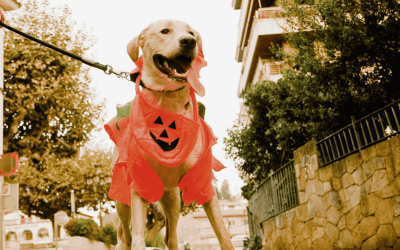We don’t blame pet lovers that hesitate to cut their own dogs’ nails. Some dogs have nails as thick as steel. Others fight nail trims tooth and, well, nail. Yet, maintaining a dog’s nails is an integral part of their care. Today, we’re going to break down why dog nails bleed and what to do. We’re also going to highlight some of our top care and first aid tips for dog nails.
Why Dog Nails Bleed: The Importance of Dog Nail Trims
Some pet parents are diligent about keeping their dog’s nails trimmed. Others are less diligent. No matter where you land on the spectrum of nail trim diligence, dog nail trims are necessary.
In the wild, dogs might not need nail trims because they walk many miles a day and navigate terrain that naturally files their nails. Lounging on our couches, surrounded by rugs and carpeting, and walking only a mile or two a day (if they’re lucky,) most pet dogs need their humans to take an active role in their nail care.
In addition to making walking more comfortable, trimmed nails prevent nail injuries. Dogs with long, unkempt nails can get their nails caught in bedding, upholstery, and more. They can be jumping up or off the couch and snag their nails on loose stitches only to pull their nail out of the nail bed, break their nail, or worse, break their toe. Yes, dogs break toes. And, yes, dogs need casts for broken toes. Talk about something that is best avoided!
Dog Nail Injuries & Infections
The most common dog nail injury is caused by trimming nails too short. Dogs have a “quick” that is covered by a casing to protect it. When we trim the nail too short, the quick can be exposed, causing sensitivity, pain, and bleeding.
Dog nail bleeding occurs when blood vessels in the quick are exposed. This is why having a coagulant (aka clotting powder) handy during nail trims is absolutely necessary. Even veterinarians and vet techs with years of experience have coagulant products nearby when performing nail trims.
When a nail is trimmed too short or a nail is otherwise injured, it can also become infected, which is why it’s so important to have persistent nail injuries evaluated by a veterinary professional.
Keeping an eye on your dog’s nails, checking them for injury regularly, and learning how to properly trim your dog’s nails helps prevent injury. When checking and trimming, don’t forget to check your dog’s dewclaw, the nail which tends to be the easiest for dogs to self-injure.
First Aid for Dog Nail Bleeds
When managing a bleeding situation in your dog’s nails, remain calm. Your dog is likely experiencing some discomfort, if not pain, from the injury. The last thing they need is for you to be frantic. Take a deep breath and get to work.
First, grab your pet first aid kit, which should have a clotting powder in it. Styptic powders are the quickest, most effective way to stop nail bleeds in dogs. Avoid styptic products with silver nitrate in them that can sting on contact and stain fabrics.
If you don’t have a clotting powder or product available, apply direct pressure to your dog’s injured nail with a soft cloth to reduce the blood flow. Then, find some flour, baking soda, or cornstarch in your pantry. Pour some into your palm and dip your dog’s injured nail in the powder. This should help but may take a few tries. Once the bleeding slows, wrap the paw and hold it for them until the bleeding subsides.
Dogs with nail injuries need to rest their paws, therefore, crate your dog for a while, grab your e-collar to prevent excessive licking and help your dog take it easy until the nail is better. Aftercare is an integral part of preventing re-injury.
When Dog Nail Injuries Become Emergencies
Most minor nail injuries that bleed look awful but tend to be minor. Most can be managed at home with the above remedies. That said, if you cannot get bleeding under control after 20 minutes of sustained bleeding, it’s time to go to the vet. An emergency vet may be the best option at that point. Always call before heading over so they know you have a bleeding emergency.
If bleeding has stopped but your dog continues to limp, lick or is whining in discomfort, call your vet to discuss the best next steps. While this scenario may not warrant a visit to the emergency vet, it may be best to see your veterinarian if the injury isn’t healing or your dog seems to be in significant pain.
Only the Best Care for Yorktown Dogs
At Hearts at Home Pet Sitting, we have a heart for dogs, cats, and small animals. We make proper pet care a priority by training our team in pet first aid & CPR, providing ongoing employee training, and staying abreast of pet care developments.
To learn more about our in-home dog walking, pet sitting, and home care benefits, contact us by email at Hello@HeartsAtHomePetSitting.com or by phone at 757-745-9868. We’ll be sure to make your dog’s day!




0 Comments